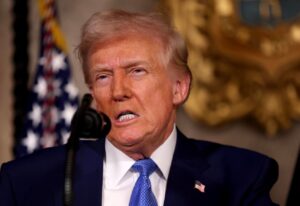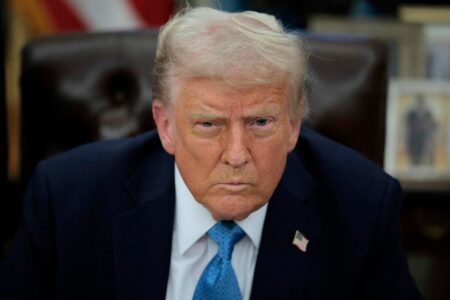Jesse Corn, CPO Zivian Health, is a digital health executive and health tech founder with over 14 years of experience in digital solutions.
Healthcare deserts, areas in the United States with limited or no access to essential medical services, are a growing concern, leaving millions of Americans without the care they need.
The U.S. healthcare system is currently contending with a growing healthcare worker shortage. In addition, the Drug Enforcement Administration (DEA) has recently proposed significant restrictions on telehealth prescribing in 2025. It’s clear that healthcare access is a true problem that will require innovative solutions from healthcare business leaders.
Over the past 16 years, I’ve had the privilege of driving digital solutions in sectors that are crying out for transformation. My current focus is healthcare access and equity. As the co-founder of Zivian Health, our team has created a digital solution to bridge gaps in healthcare compliance and collaboration, with the explicit aim of streamlining the collaborative healthcare model and opening pathways for physicians and advanced practice clinicians to provide more equitable healthcare access.
This article explores the issue of healthcare deserts and highlights innovative solutions to increase access, improve health outcomes and bridge the healthcare gap across the nation.
The Healthcare Desert Problem
Healthcare deserts are geographic regions where residents face significant barriers to accessing healthcare services. These areas can be rural, urban or even suburban, and the lack of healthcare infrastructure can vary widely.
In 2021, a GoodRx Research report found that over “80% of counties across the U.S. lack proper access to the services needed to maintain health.” According to the report, individuals living in these areas have “less than adequate access to pharmacies, primary care providers, hospitals, trauma centers, and/or low-cost health centers.”
Studies have also shown that other problems—long waiting times, high costs, poor patient experiences—are occurring as a byproduct of infrastructural deficiencies and healthcare worker shortages. A 2023 study released by The Harris Poll and the American Academy of Physician Associates (AAPA) found that 56% of adults wait more than a week for an appointment and 65% say that coordinating and managing healthcare is overwhelming and time-consuming. In addition, concern over cost was cited as the main reason for skipping or delaying healthcare.
The consequences of these issues are far-reaching:
• Health Disparities: Healthcare deserts often correlate with higher rates of chronic diseases, preventable hospitalizations and overall poorer health outcomes.
• Economic Impact: Communities in healthcare deserts suffer economically, as the absence of healthcare facilities can deter businesses and hinder economic growth.
• Reduced Quality Of Life: Limited access to healthcare can have profound effects on the quality of life for residents, particularly those with chronic conditions or in need of regular medical care.
Solutions To Improve Access
Addressing healthcare deserts is a complex challenge, and there is a range of solutions that healthcare leaders are pursuing to make a difference in these populations.
Telehealth Expansion: Further expansion and improvement of telemedicine services can bring healthcare directly to patients in underserved areas, offering remote consultations, monitoring and treatment.
Mobile Clinics: Mobile clinics and telehealth-enabled vehicles can provide medical services to rural and underserved communities, offering a range of primary care, screenings and preventive services.
Community Health Workers: Trained community health workers can bridge the gap by providing health education and preventive care and assisting residents in navigating the healthcare system.
Public-Private Partnerships: Collaborations between government, nonprofits and private healthcare providers to establish clinics in underserved areas can address worker shortages and increase access to care.
Rural Health Incentives: Financial and educational incentives for healthcare professionals to practice in rural and underserved areas can help alleviate shortages.
Electronic Health Records (EHRs): Making use of EHRs and building telehealth infrastructure in underserved regions can improve coordination of care and enable patients to access their medical history and communicate with healthcare providers.
Retail Clinics: Retail clinics and pharmacies can be used as healthcare access points to address basic healthcare needs in areas where traditional medical facilities are scarce.
Transportation Solutions: Solutions such as ride-sharing programs for healthcare appointments can help residents reach medical facilities more easily.
Telepharmacy Services: Telepharmacy, which allows pharmacists to provide remote medication management and consultation, can play a crucial role in medication access.
Taking Initiative
Healthcare professionals, advocates and organizations play a vital role in raising awareness about the healthcare desert problem. My first recommendation is to prioritize scalability and sustainability. Initiatives like telehealth expansion and mobile clinics offer the largest potential, as they require relatively modest investments in technology and infrastructure compared to brick-and-mortar facilities. Partnering with technology providers and local organizations can help leaders pilot these solutions, demonstrating value before scaling up.
I also encourage leaders to use data-driven storytelling to highlight the human impact of these gaps. Launch public campaigns, join or support initiatives like National Rural Health Day, or partner with organizations that focus on health equity. Lastly, in my experience, tying these efforts to measurable outcomes, such as reduced wait times or improved health metrics, builds credibility and attracts further investment and support.
Of course, implementing these strategies can come with challenges. Resistance to change, limited local buy-in and the ongoing shortage of healthcare professionals are hurdles that must be addressed proactively. For example, while telehealth holds promise, the lack of broadband access in rural areas can hinder adoption. Similarly, when recruiting providers for underserved areas, offering financial incentives such as loan forgiveness or stipends for relocation can make these roles more appealing. The key is to identify potential barriers early and align with both community needs and available resources.
The Road Ahead
There is not a single, overnight solution for healthcare deserts in America. Healthcare business leaders must work together—implementing the right strategies and investments—to improve access and reduce health disparities. The Covid-19 pandemic has shown that rapid changes in healthcare delivery are possible, and further innovation can benefit communities that have long struggled with healthcare access.
By continuing to explore creative solutions, foster public-private collaborations and promote policy changes, we can take meaningful steps toward closing the healthcare desert gap and ensuring that all Americans have access to the healthcare services they need for a healthier, more prosperous future.
Forbes Business Council is the foremost growth and networking organization for business owners and leaders. Do I qualify?
Read the full article here











